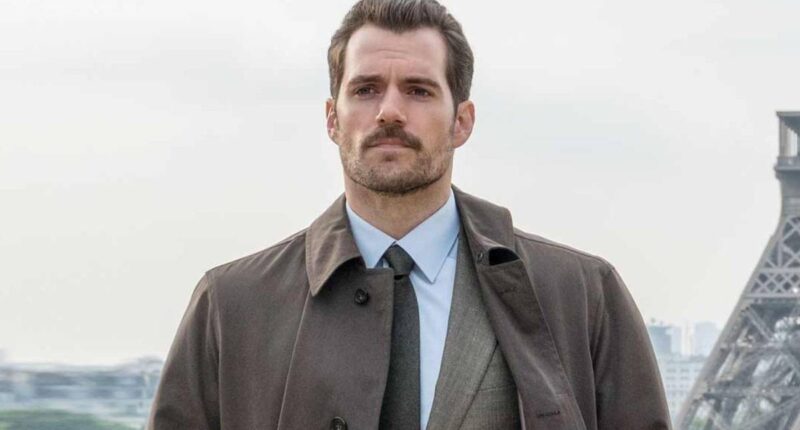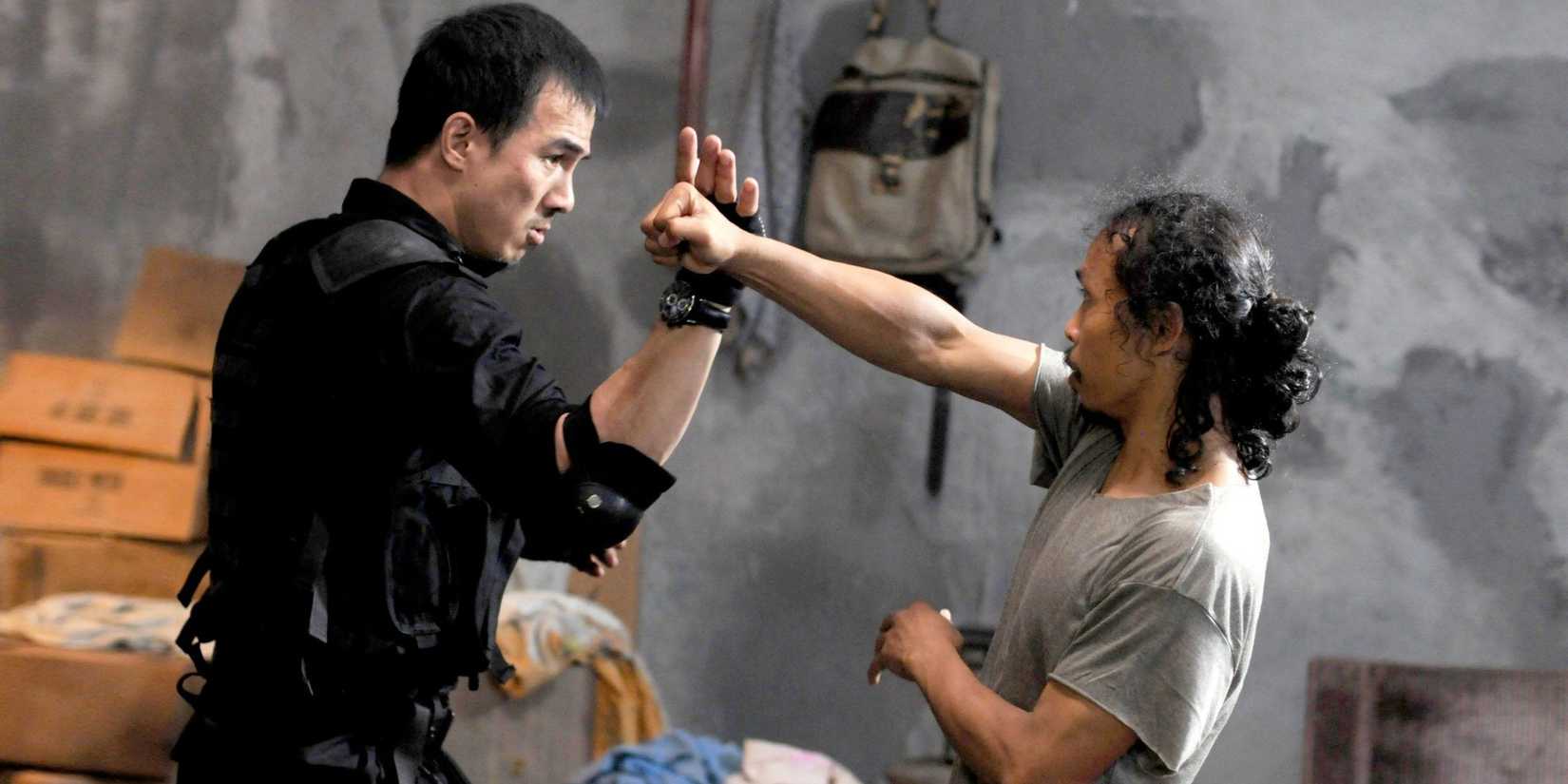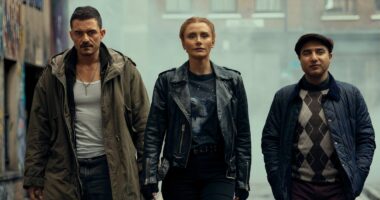The 2010s were a solid era for action filmmaking. Directors pushed the limits of choreography, storytelling, and technical craft, producing more than a few modern classics. The advent of a certain stoic, seemingly invincible action hero in 2014 launched a whole new subgenre, while big-budget blockbusters delivered one explosive effort after another. Not every actioner was a hit, but those that were changed the game.
Logically, every year of the decade produced at least one hit movie in this electrifying genre. With this in mind, this list ranks the very best action movie from every year of the 2000s. The titles span a range of styles and tones, from more grounded stories to totally operatic ones, comic book showdowns to existential revenge sagas. However, all are deeply entertaining and helped move the genre forward.
2010: ‘Inception’
“You mustn’t be afraid to dream a little bigger, darling.” The decade started with this big-brain action sci-fi from the ever-inventive Christopher Nolan. Leonardo DiCaprio stars as Dom Cobb, a thief who enters dreams to steal secrets, offered one last job that could reunite him with his children. But to succeed, he must plant an idea instead of stealing one. The result is a labyrinthine odyssey through layered dreamscapes where time dilates, and gravity collapses. It explores hard, speculative ideas without scrimping on the genre thrills.
The film’s set pieces, including hallways spinning, cities folding, and mountains exploding, remain among the most audacious, well, ever really. Yet the movie isn’t all style, no substance either. There’s a lot of emotion beneath the spectacle. Fundamentally, the hero is a man haunted by guilt, torn between illusion and reality. All this builds up to one of the decade’s most memorable (and most debated) final shots.
2011: ‘Mission: Impossible – Ghost Protocol’
“Next time, I’ll let you know I’m gonna climb the damn building.” By its fourth installment, most franchises are gasping for air. Mission: Impossible – Ghost Protocol was upping the ante. Brad Bird, in his live-action debut, revitalizes the series with kinetic precision and some welcome humor. Tom Cruise returns as IMF agent Ethan Hunt, framed for bombing the Kremlin and forced to clear his name without official support. His quest involves some of the most impressive stuntwork of the modern era, most notably the famous Burj Khalifa sequence.
In this white-knuckle scene and many others, Bird’s background in animation very much shows through. Every movement feels deliberate, every shot perfectly composed. In an era of CGI overload, Ghost Protocol reasserted the power of real stunts, clever setups, and old-fashioned adventure. It also reconfirmed Cruise as one of the last real movie stars. Few actors have the heft to ground such an extravaganza.
2012: ‘The Raid: Redemption’
“We’re not here to do good. We’re here to survive.” The Raid arrived like a thunderbolt, immediately redefining action choreography for the rest of the decade. This Indonesian juggernaut is a 100-minute adrenaline rush distilled to perfection. Iko Uwais stars as a rookie cop trapped inside a high-rise controlled by a ruthless crime lord, forced to fight his way floor by floor to survive. The film’s stripped-down plot creates relentless tension, while Uwais’ physicality makes every fight seem mythic.
The premise has the simplicity of a video game, but the execution is spectacular. Every punch, kick, and knife strike feels visceral, shot with clarity and rhythm. At times, the fight scenes are almost poetic. His commitment and martial arts prowess here are seriously impressive, and much of the movie’s success is thanks to him. Sure, most of the characters are a little thin, but the story is propulsive enough that you’re reeled in anyway.
2013: ‘Snowpiercer’
“I know what people taste like. I know that babies taste best.” Snowpiercer is one of the most entertaining movies ever about dystopian class conflict. It’s set aboard a train hurtling through a frozen post-apocalyptic world, where reluctant rebel leader Curtis (Chris Evans) fights from the impoverished tail of the train toward its luxurious front. Each carriage holds a new level of society, a new grotesque revelation. Evans gives one of his best performances in the part, torn between leadership and guilt, while Tilda Swinton steals scenes as a bureaucratic monster of the ruling class.
The ideas at play here are deeply political (and profoundly bleak), overlapping to some degree with those of Parasite, but Bong Joon Ho makes sure that the proceedings are always fun, never overly dour. The action sequences are amazingly crafted and genuinely thrilling, including claustrophobic brawls lit by torchlight and gunfire echoing through narrow corridors.
2014: ‘John Wick’
“Yeah, I’m thinking I’m back.” John Wick resurrected Keanu Reeves as both cult icon and action messiah. The plot is elegantly simple — a retired hitman goes on a vengeful rampage after gangsters kill his dog, the last gift from his late wife — but it’s the style that changed everything. Directors Chad Stahelski and David Leitch, both former stunt coordinators, conjure up a stylized underworld of secret assassins, blood oaths, tailored suits, and bone-crunching violence.
The part was also rewritten with Reeves in mind, and it shows. John Wick sees the star at his very best. He trained relentlessly for the role, adding to the realism of the fights and shootouts. He’s believable and, crucially, deeply likable. It is a tale of grief transformed into purpose. This combination (sympathetic protagonist plus visceral action) resonated, grossing $86 million and spawning an entire cinematic universe. Countless action movies since have borrowed from John Wick‘s playbook.
2015: ‘Mad Max: Fury Road’
“Oh, what a day! What a lovely day!” With Mad Max: Fury Road, George Miller, returning to his dystopian wasteland decades later, delivered a masterclass in visual storytelling. He conjures up a vivid wasteland world of thugs, monster trucks, and flaming guitars. In this harsh environment, haunted wanderer Max (Tom Hardy) is simply trying to get by, until he crosses paths with Imperator Furiosa (Charlize Theron) and is swept up into the rebellion against a grotesque warlord (Hugh Keays-Byrne).
The result is a genuine epic, a vivid action epic with a rich mythology, bold colors, and some of the most enjoyable chase sequences of the decade. Indeed, the whole movie is practically one extended chase. The action is marvelously chaotic and bursts with energy, yet the movie also features layered characters and surprisingly thoughtful themes, including survival, ecological collapse, disability, and, to some commentators, even feminism.
2016: ‘Captain America: Civil War’
“He’s my friend.” “So was I.” Captain America: Civil War pits Chris Evans’ Captain America against Robert Downey Jr.’s Iron Man in a moral and physical battle over government control of the Avengers. The action is exhilarating, replete with airport brawls, highway chases, and brutal hand-to-hand fights. Indeed, the scenes at the airport are some of the MCU’s best, featuring Spider-Man’s (Tom Holland) introduction and the full Avengers lineup. That said, what really makes the movie resonate is the heartbreak and the characters’ inner struggles. Loyalty clashes with ideology, friendship with guilt.
The Russos succeed in turning a comic book event into a Shakespearean conflict. This approach becomes especially palpable in the final fight, one of the bleakest moments in the whole franchise. Stripped of quips and color, that story beats land almost like a tragedy. The directors also deserve praise for deftly juggling a sprawling ensemble cast of characters and multiple interlocking plotlines.
2017: ‘Logan’
“Don’t be what they made you.” Logan is a superhero swan song mixed with a Western elegy. Set in a near-future America where mutants are nearly extinct, Hugh Jackman’s Wolverine is now a broken man caring for an aging Professor X (Patrick Stewart) and protecting a young mutant, Laura (Dafne Keen), who might represent the future. Instead of gloss and fantasy, the action here is raw and grounded, consisting of brutal knife fights and desperate escapes; we get grit instead of glamour.
The stars all rise to the occasion. Jackman, scarred and exhausted, delivers one of the best superhero performances ever. The ending is genuinely moving, hitting us with a tearjerking combo of self-sacrifice, peace, and a child’s trembling eulogy. In contrast to most blockbuster “conclusions,” Logan doesn’t end with a setup for the next franchise entry. Instead, it ends with a grave, a cross turned sideways into an “X,” and a silence that says everything.
2018: ‘Mission: Impossible – Fallout’
“There can’t be peace without first a great suffering.” For many fans, Mission: Impossible – Fallout represents the pinnacle of the Mission: Impossible series. This one finds Ethan Hunt (Cruise) haunted by the consequences of his idealism, racing to stop nuclear catastrophe while confronting ghosts of loyalty and guilt. Once again, the action is nothing short of operatic, a pageant of halo jumps, helicopter chases, and rooftop sprints across London.
At times, Cruise’s dedication to the stunts borders on insanity. The star comes across as fittingly world-weary here, yet unable to totally abandon his idealism. That’s a big part of what makes him an interesting protagonist. Alongside Cruise, there are also fantastic performances from Rebecca Ferguson, Vanessa Kirby, and Henry Cavill, including the famous moment where he “reloads” his arms, which immediately became a meme. Add in themes of sacrifice and aging, and you’ve got a modern action classic.
2019: ‘John Wick: Chapter 3 – Parabellum’
“Si vis pacem, para bellum.” John Wick strikes again. If the first movie and the second expanded the Baba Yaga’s story, Parabellum turned it into a full-blown myth. On the run after breaking the assassin code, Wick faces every killer in the world with only a gun and his unending resolve. While some plot points are beginning to get a little tired, the fight scenes are as gripping as always. For instance, the opening sequence, a knife fight in a museum, is pure kinetic art.
Each encounter builds on the last, from horseback chases to sword duels bathed in neon, but all this violence is taking its toll. Parabellum ends on a note of defiance and exhaustion rather than triumph. Wick is more melancholy than ever, and revenge is no longer enough to sustain him. He’s searching for deeper meaning; his shadowy world of assassins and endless battles becomes a metaphor for endurance. How long can one man keep going before he’s swallowed by his legend?


















